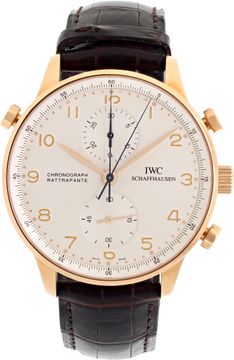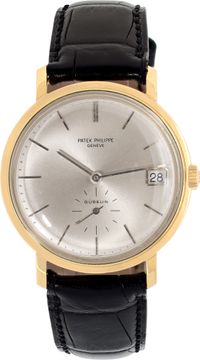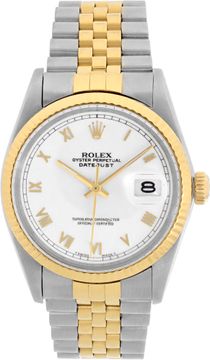Your Guide to the Modern Rolex Milgauss 116400

If you want a Rolex watch with personality, then look no further than the Milgauss. First conceived as the ultimate watch for scientists, the Rolex Milgauss is now one of the brand’s most fun and quirky watches thanks to a handful of interesting design details. Since there are a few variations to choose from, here’s a complete guide to the modern Rolex Milgauss 116400 collection.
Brief History of the Rolex Milgauss
The Milgauss made its official debut in the mid-1950s as Rolex’s antimagnetic watch. In fact, the name of the watch is a combination of the words “Mille” (French for “one thousand”) and “Gauss” (the unit of magnetism measurement). So, the Milgauss could withstand magnetic fields of up to 1,000 gauss. This was possible thanks to the architecture of the case, which included a shield to protect the movement. Fashioned from ferromagnetic alloys, the Milgauss included one protective barrier screwed to the caliber and one screwed to the case. To prove the Milgauss’ antimagnetic properties, Rolex sent the watch for testing to The European Organization for Nuclear Research (CERN).

The Milgauss’ resistance to magnetic fields meant that it was the ideal watch for the scientific community at that time. To emphasize the connection, Rolex added an unusual lightning-bolt shaped seconds hand to the dial. The first Milgauss to include that striking seconds hands was the Milgauss ref. 6541 from 1956 (*There was the prototype Milgauss ref. 6543 from 1954, but that did not include the lightning-bolt hand.) With its 38mm stainless steel Oyster case, black rotating bezel, black dial, and steel Oyster bracelet, the early Milgauss 6541 model bears a striking resemblance to early Submariner models.
In the mid-1960s, Rolex replaced the 6541 with the Milgauss 1019. With the introduction of the Milgauss ref. 1019, Rolex did away with many of the design details of the first Milgauss. For instance, a smooth steel bezel replaced the black rotating bezel, stick markers replaced the mix of round and triangular ones, and a straight seconds hands replaced the lightning bolt seconds hand. You could say, that with this iteration of Rolex’s antimagnetic watch, the Milgauss lost some of its charm. The Milgauss 1019 never really found its footing during its time (now, however, it’s a collectible and sought-after vintage Rolex model) and Rolex ultimately shelved the watch in 1988.
The Rolex Milgauss Makes a Comeback
In 2007, the Milgauss made a surprising return–and as expected, with plenty of modifications and enhancements in tow. The modern Milgauss 116400 is a full stainless steel model that sports a 40mm Oyster case fitted with the ubiquitous Oyster bracelet. Plus, the bracelet secures via a folding Oysterclasp with the Easylink 5 mm comfort extension system. There’s also the Twinlock screw-down crown, the 100-meter water resistance, and the Chromalight luminescence with its distinct blue glow in low-light.

Unlike its slightly sterile predecessor, the contemporary Milgauss is full of color and personality. Not only did Rolex bring back the lightning seconds hand, but also made it bright orange. The orange colorway continues onto the dial details, complete with the MILGAUSS name in the same shade. During the debut of the modern Milgauss, Rolex offered three different versions: a white dial version, a black dial version, and an anniversary version with a black dial.

The signature feature of the anniversary Milgauss is an innovative green-tinted sapphire crystal sitting on top of the case, which gives the watch a futuristic edge (yet another nod to the scientific community). Rolex calls it “Glace Verte” (French for “green glass”) which explains the letters in the 116400GV reference number. Upon the release of the green sapphire, Rolex announced that it did not even apply for a patent for the invention since it is so difficult to manufacture.

If you hold the standard black dial Milgauss ref. 116400 next to the anniversary black dial Milgauss ref,116400GV with the green sapphire crystal, you’ll note some dial differences. The former includes all white-lumed baton hour markers with adjacent orange plots on the outer minute track, while the latter includes three orange baton markers at 3/6/9 o’clock along with orange numerals on the outer minute track. However, it is the white dial Milgauss that boasts the most orange details, including orange hour markers!
In 2014, Rolex added yet another dial variation to the Milgauss 116400 collection. Dubbed Z-Blue, the electric blue dial Milgauss ref. 116400GV also comes with a green sapphire crystal and orange lightning bolt-shaped seconds hand. This is by far, the most colorful modern Rolex watch to date.

Rolex eventually discontinued making the non-GV Milgauss watches and currently only produces the Milgauss ref. 116400GV versions–available with either a black dial or Z-Blue dial.
Powering the newest generation Milgauss models is the in-house Caliber 3131. Along with the anti-magnetic shield, Caliber 3131 also includes Rolex’s blue Parachrom hairspring, which is insensitive to magnetic fields. Like all modern Rolex movements, Caliber 3131 is self-winding and certified by COSC. It offers a power reserve of 48 hours.
Quick Rolex Milgauss 116400 Reference Table
Reference Production Years Dial Crystal 116400 2007-2014 Black Clear Sapphire 116400 2007-2016 White Clear Sapphire 116400GV 2007-Present Black Green Sapphire 116400GV 2014-Present Z-Blue Green SapphireIf you’re on the hunt for a Rolex watch with an intriguing history and a playful side, then the modern Milgauss may be right for you. Whether you go for the fresh white dial with plenty of orange touches, the slightly tamer black dial version with the clear crystal, the anniversary edition with the black dial and unique green sapphire, or the super fun Z-Blue plus Glace Verte combo, the often overshadowed Rolex Milgauss 116400 deserves another look.

The Best Used Rolex Watches To Buy Right Now
NEXT ARTICLE
It Looks Great, But Is it Real? How to Spot a Fake Cartier Love Bracelet






